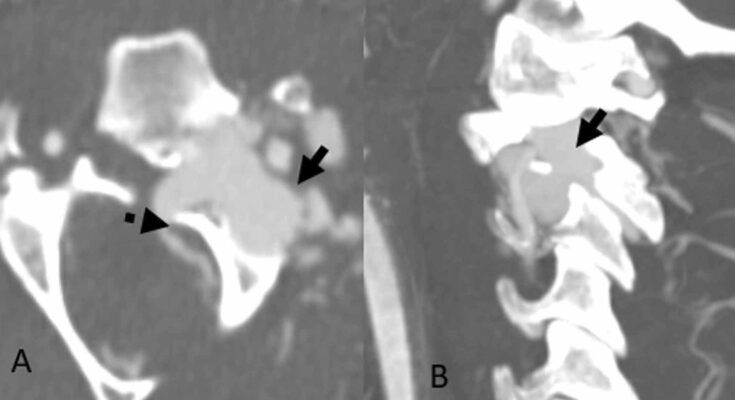Fistulagrams in Albuquerque:
The state of New Mexico recently announced that the University of New Mexico Health Sciences Center would begin offering fistulagrams to its Albuquerque residents. Like sinograms, which have been used since the 1950s, fistulagrams are diagnostic medical procedures that involve the use of fluoroscopy and contrast material to create detailed images of abnormal passages within the body called fistulas or sinuses. Often, they’re used to assess conditions such as appendicitis, Crohn’s disease, diverticulitis, and intestinal blockages that can cause serious health issues if left untreated.
What is a Fistulogram?
A fistulogram is a medical test that uses fluoroscopy and contrast material to produce images of an abnormal passage within the body called a fistula. Similarly, a sinogram assesses an abnormal passage called a sinus that originates or ends in one opening, often on the skin.
A fistulogram is an imaging technique used to diagnose and treat abnormalities of the gastrointestinal tract. The procedure is not typically performed as a stand-alone test, but rather as part of an abdominal MRI with the endoscopic examination (ARMS) or endoscopic retrograde cholangiopancreatography (ERCP). For example, if the colonoscope is inserted into the rectum and then pushed through the bladder up into the stomach without passing through any other organs, it can be viewed under fluoroscopy. If contrast material is injected at this point, it will show up on x-rays taken from various angles. Images captured during these procedures can be used to identify irregularities such as polyps or ulcers that need attention from surgeons before they become life-threatening.
How is a Fistulogram Performed?
A fistulogram is a medical test that uses fluoroscopy and contrast material to produce images of an abnormal passage within the body called a fistula. Similarly, a sinogram assesses an abnormal passage called a sinus that originates or ends in one opening, often on the skin. This procedure is used to identify any abnormalities and is often performed if there are persistent symptoms or complications such as infection. To complete the study, patients will lie flat on their backs while they undergo computed tomography (CT) scanning. After undergoing CT scanning, a radiopaque dye will be injected into the abnormal area so it can be seen with x-rays by use of fluoroscopy.
What are the Benefits of a Fistulogram?
A fistulogram is a medical test that uses fluoroscopy and contrast material to produce images of an abnormal passage within the body called a fistula. Similarly, a sinogram assesses an abnormal passage called a sinus that originates or ends in one opening, often on the skin. A fistulogram can be used to assess abnormalities such as colorectal cancer or infections of the large intestine. With this procedure, physicians inject small amounts of air and liquid containing a contrast dye into the colon. The physician will then take X-rays while monitoring how quickly the liquid moves through your intestines. Unlike most other medical imaging tests, no special preparation is needed prior to the procedure. fistograms are noninvasive and usually painless because they use X-ray technology instead of radiation therapy. There are a few side effects associated with this procedure as well since it does not use any type of radiation or radioactive materials. However, some patients may experience nausea from sedation drugs administered before the test takes place.
Who Should Consider Getting a Fistulogram?
A fistulogram is a medical test that uses fluoroscopy and contrast material to produce images of an abnormal passage within the body called a fistula. It may be used to diagnose diseases, such as Crohn’s Disease, ulcerative colitis, or diverticulitis. A fistula is similar to a sinus but usually has one opening.
This procedure can be done on patients who have symptoms of an abnormal passage and are concerned about the cause of their symptoms. One important difference between a fistulogram and other imaging tests is that it requires no sedation or pain relief. There are several types of fistulograms available, including X-rays with a metal marker placed inside the body cavity to determine its position before injecting contrast dye into the surrounding tissue. These X-rays will show if there is anything obstructing fluid from draining from the affected area, which can then be surgically repaired. Other options include magnetic resonance imaging (MRI) scans, computed tomography (CT) scans, intravenous urography with MRI enhancement, CT colonography (virtual colonoscopy), and enteroclysis.
When is the Best Time to Get a Fistulogram?
The best time to get a fistulogram is when the cause of the abnormal passage, such as an infection, is still unknown. A fistulogram is also helpful when determining whether there are any blockages to clear. Once the cause of the abnormal passage has been determined, treatment can then be given with an endoscopy or a sinogram. This will allow your doctor to assess whether you need surgery and if so, what type of surgery would be best suited for your condition. For example, an infected tooth might require root canal therapy, while a kidney stone may require lithotripsy.
If you have other symptoms accompanying the abnormal passage, such as stomach pain or fever, it may indicate another medical problem that requires evaluation by a specialist. However, depending on the location of the abnormal passage, some patients may prefer not to go through surgery. Fistulograms are usually performed under anesthesia with local anesthesia; sedation; or general anesthesia. You should feel no discomfort during this procedure and once your appointment is finished, you should be able to go home immediately.
How Much Does a Fistulogram Cost?
A fistulogram is a medical test that uses fluoroscopy and contrast material to produce images of an abnormal passage within the body called a fistula. Similarly, a sinogram assesses an abnormal passage called a sinus that originates or ends in one opening, often on the skin.
Many people are not aware of these procedures because they have not been around very long. There are two options for making a fistulagram. The first is through the use of x-rays, which take pictures of a passageway inside your body with high-frequency waves. The second option is to inject you with dye so that it can be traced as it travels through your system. The x-ray version takes about 15 minutes while the injection takes about five minutes. If you want more information about this procedure and what it could mean for you, we recommend scheduling an appointment with our specialist today!




